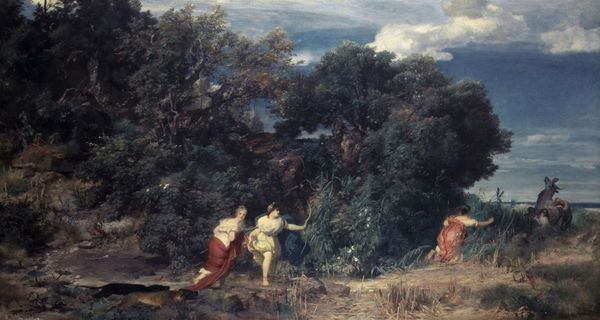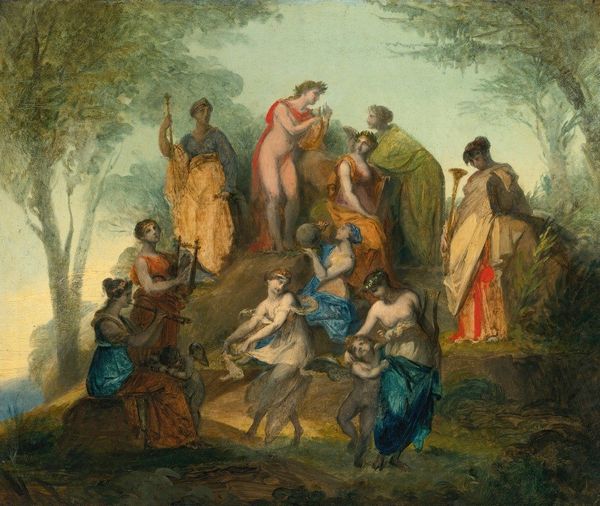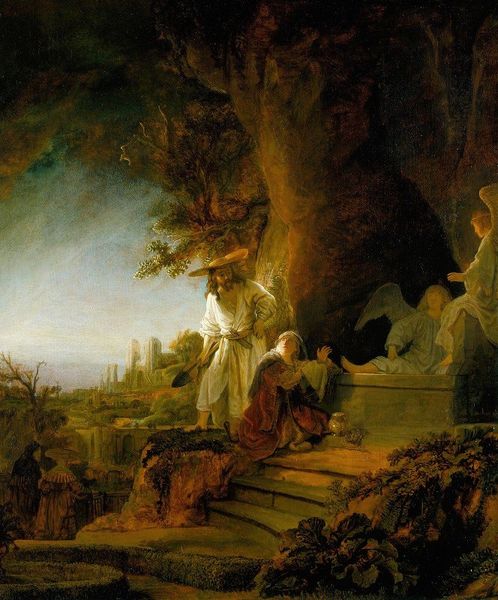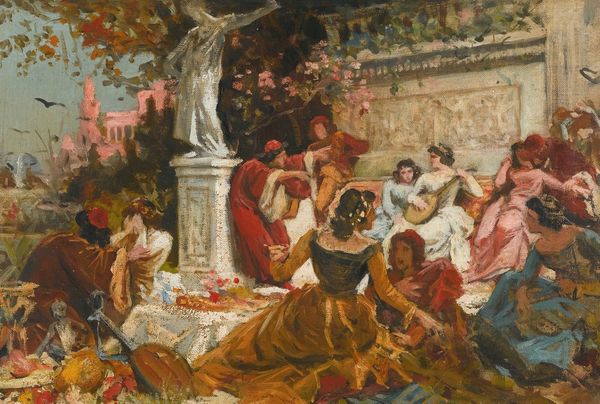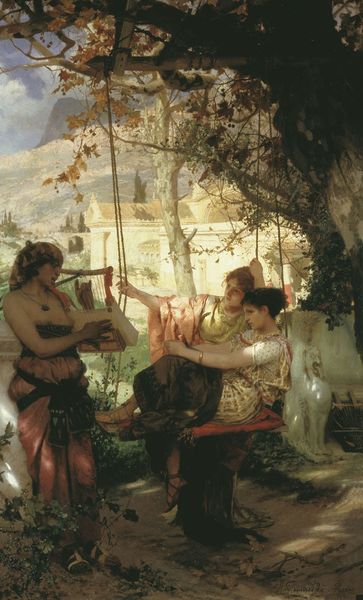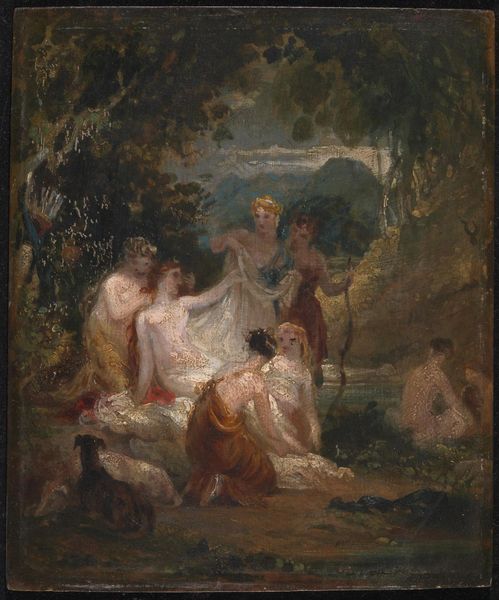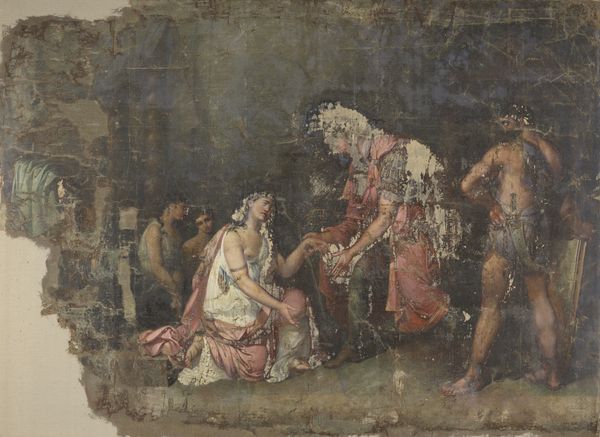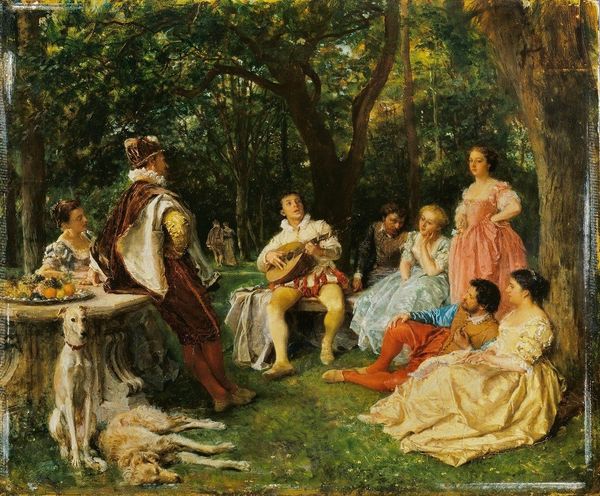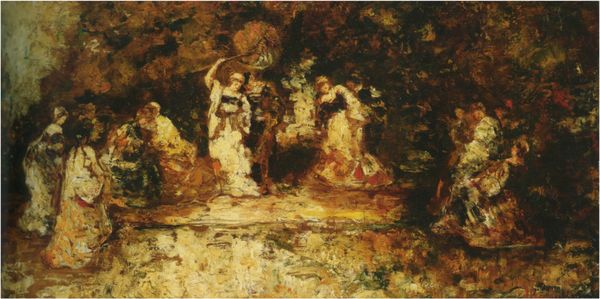
Copyright: Public Domain: Artvee
Curator: Ah, the atmosphere is intoxicating! A little chaotic, even, but deeply inviting. I could happily lose myself in that scene for an afternoon. Editor: Indeed. What we have here is Hans Makart's "Musikalische Unterhaltung," or "Musical Entertainment," painted in 1874. It's an oil on canvas, and quite the vibrant spectacle. Curator: "Spectacle" is the word! It’s as if a dam has burst and all this baroque exuberance is spilling out. The colors are rich, even verging on decadent, and it feels so performative! Is everyone in costume, or just especially well-dressed? Editor: A valid question. Formally, one could observe that the composition arranges the figures within a theatrical space—columns to the left and verdant nature to the right frame the scene like a stage. This emphasizes the performative aspect you astutely noted. Curator: Framed, exactly! It does feel like a play. All those different faces, poses, are full of their little dramas! Is the lute player the conductor of it all, a red-clad Orpheus? He looks more in charge of the party than the music. Editor: It's interesting to consider that the musician, ostensibly at the center, is also integrated seamlessly into the throng, both unifying and dissolving his agency. This ambivalence echoes within the visual syntax, as Makart navigates somewhere between classical ideals and the emerging dynamism of modern painting. Curator: "Emerging dynamism"—that's why it doesn’t feel frozen like some history paintings do. I can almost hear the buzz of conversation, a stolen joke. It makes you want to be a part of the buzz. Is this some artistic critique about idle and joyful leisure? Editor: Or a celebration of it? We might examine Makart's skillful manipulation of light, directing it across the silk fabrics, the flushed faces, thus creating an air of sumptuousness, perhaps designed to dazzle his viewers. What if pleasure, as rendered materially, is the very point? Curator: Yes, and that feels so honest, not overly allegorical or anything. As much as you unpack the classical references and compositions, it strikes me, looking at all the painting and painterly details, it's just… a scene with the sort of lush living I imagine myself having when I grow up. Thank you, Mr. Makart! Editor: It does serve as a lens through which we can see not just the artistic debates of the late 19th century, but, arguably, how pleasure and artifice reflect our values, even now.
Comments
No comments
Be the first to comment and join the conversation on the ultimate creative platform.
